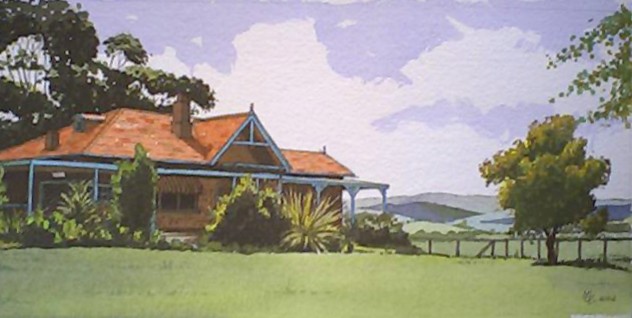Life after retirement: Finding an artist in yourself

OK, so you’re sixty five . . .what’s next?
Let’s ask three questions. Are you going to retire? Have you any idea how you’ll fill your time? Have you thought of taking up painting or drawing? I know, most people immediately answer that last question with “I can’t draw to save my life!”, but that’s not necessarily true.

You see the basic difference between an artist and an ‘ordinary’ person is that an artist looks at something and sees it, whereas the average person looks and rather than seeing the object, they draw on previous knowledge of what it is generally like, and they use that somewhat blurred image. They look at a violin, for instance and their brain says ‘Ah, a violin, they look like this’ and it draws a fuzzy picture in your mind. An artist, on the other hand, looks at the violin and starts subconsciously assessing it – what is its colour – what is it made of – what’s the shape of that curly bit on the end – and what are those four little knobs doing on the end. That’s what I mean about seeing the object as opposed to just looking at it. Learn that little trick and you’re well on the way to being an artist!
Next comes the easy bit. This is where you rush off to the art shop just down the road, to buy yourself some gear. And nowadays, this doesn’t have to be the expensive exercise it sometimes was in the past. A lot of company’s now produce very adequate materials for beginning artists; large tubes of acrylic paint can cost as little as two dollars each, a canvas as big as a metre square can be as inexpensive as twenty dollars, (cheaper if you buy smaller), and you can buy perfectly useable brushes for about five dollars for a pack of four! So for under fifty dollars you could be going home to start your first masterpiece; unless you want to be really posh about it and invest in added extras like an easel, an artist’s pallet or other items like that. Don’t forget, you can paint on a canvas propped up against a pile of books just as well as one on an easel, and an old china plate makes a very adequate pallet! But paint, canvas and brushes are necessary, so get the best you can afford of those.
Having arrived home with all your loot, you now need to decide what you want to paint. I would suggest avoiding portraits of your grand-children at this stage of your development, but you can do one of three things. First, you might want to set up a still life on the kitchen table, perhaps using kitchen tools, fruit, dishes or models stolen from the mantelpiece in the living room, If you do this, use stuff that won’t rot, because you might want it to stay there for several days. Second, use the method employed by most artists. Either go out and take photographs of local scenes that attract you, or search through the family photo album, both perfectly legitimate methods. Third, copy paintings you have in art books, following the techniques used by the artist who created them. This final method should only be used for your personal experience – trying to sell the result could land you in trouble with the copyright laws! Then get stuck in and start painting.
There will still be a lot to learn yet of course, and I will write some more short articles in the future, developing the theme of how to do it, but in the meantime, just enjoy yourself, splash a bit of paint about on your canvas and see what happens! You never know, there might be an artist in there somewhere, one you never knew you had – and even if you turn out to be totally without talent, at least you’ll have had some fun and only wasted about fifty dollars. And if so you can give the unused paints to your grandchildren, so their parents will have the problem of getting rid of them!








 Proudly Australian owned and operated
Proudly Australian owned and operated